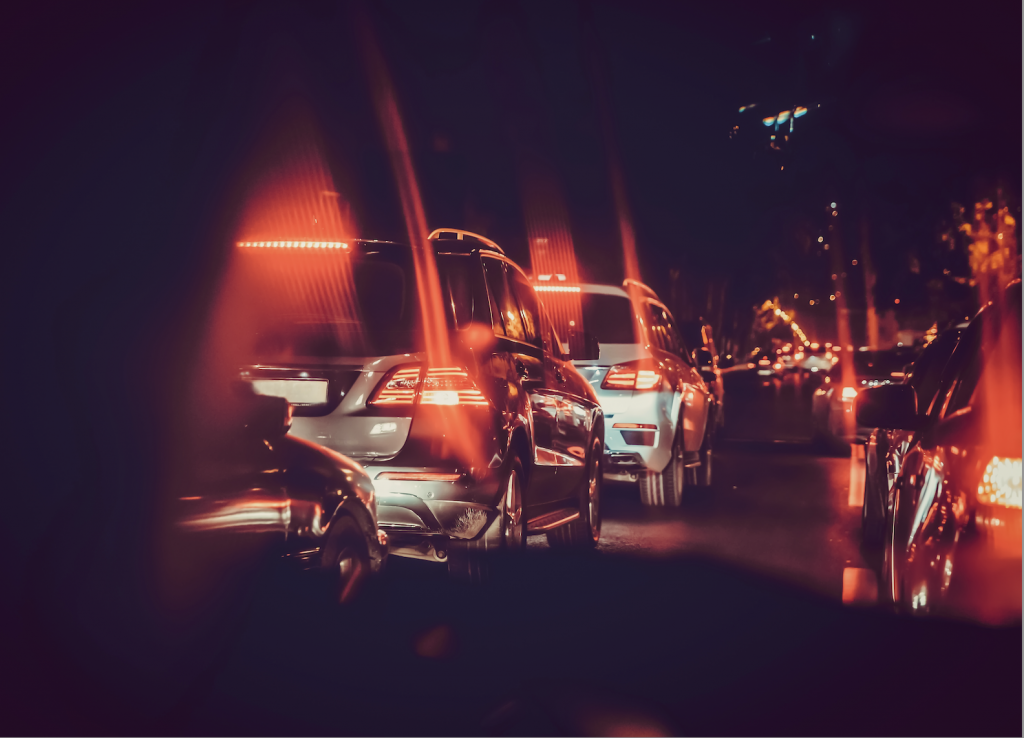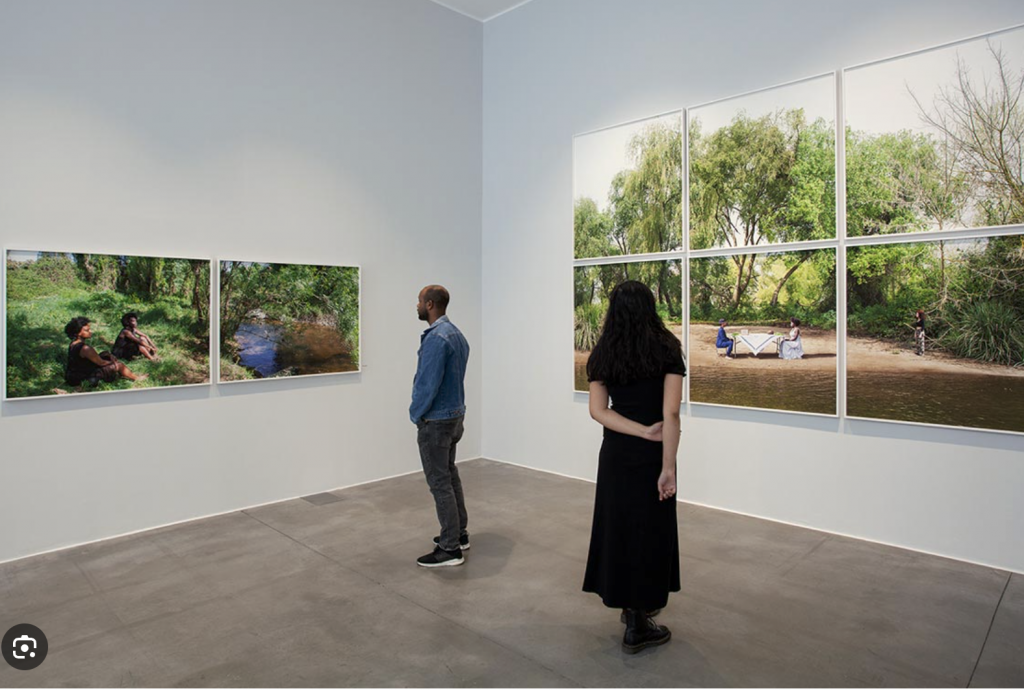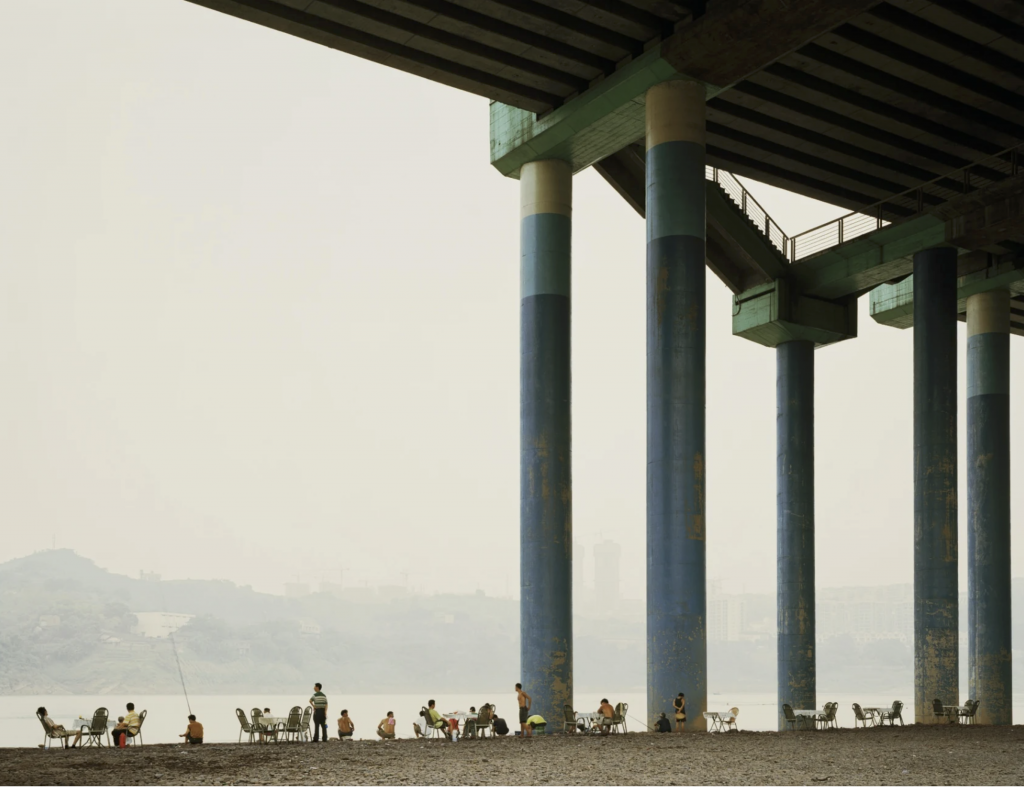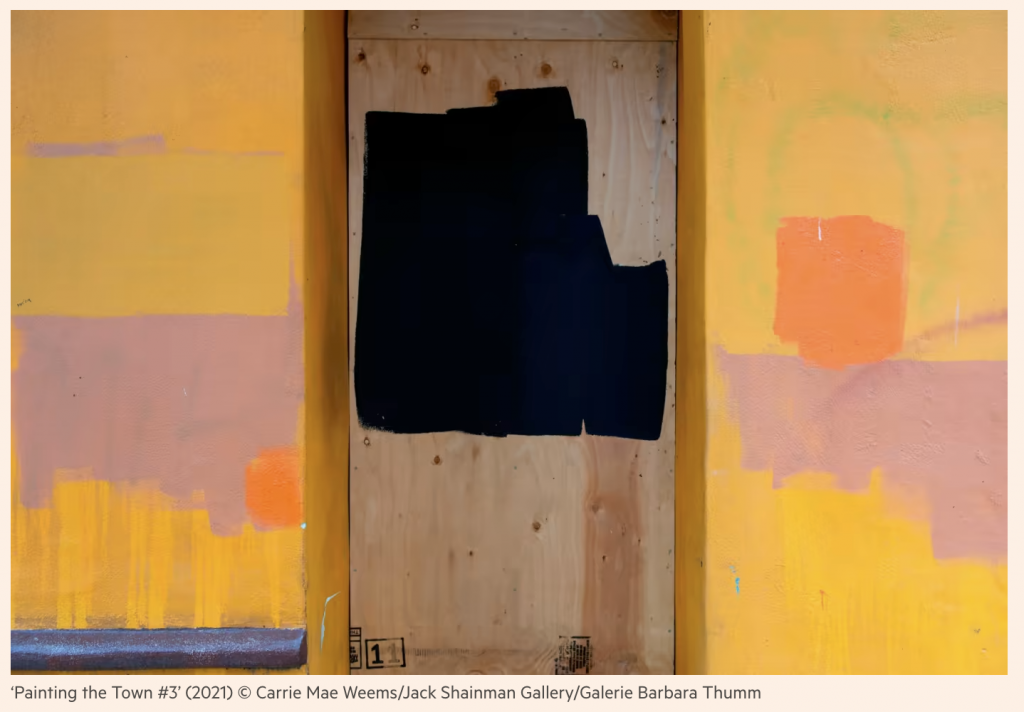With last weeks seminar consisting of some discussions about space and how people move about in it, this week we were to discuss how photographers make use of space.
We discussed first the task that Sylvia gave us to work on last week where we read “For Space” by Doreen Massey, and my initial reading of it can be looked at in my week 9 post.
Pointed Discussion
We were asked to provide three items to discuss and the point I selected was how, when stuck in a traffic queue, everyone in their own cars is each in their own space. I’m not talking about the space in the little metal box, but the bubble that they live in. Each of these drivers has a reason to be in the car at that point of the road at that time but all will be different. Sure some will be on the way home from work to their family, but each family is different in a different house, with different partners, with different decoration and different pets. It’s almost as if there is a whole multiverse laid out in front of me and behind me. The times when these bubbles/spaces combine and connect is when we make friends or enemies or sometimes random connections that join us to other people’s bubbles.

Sylvia had also made some notes on the book and also the audio clip that we listened to, I’ve grabbed a few of them here in a list below.
- Politics of space, regional inequality, engagement with nature, complexity of cities
- What implicit assumptions do we make about space?
- Conquering of space through tales we tell of the voyage of discovery
- All spaces are there waiting to be conquered by those who have power. What is wrong with this way of thinking?
- Developed and underdeveloped countries , need to catch up to western way.
- This is an example of how our thinking of space can be limiting
- How we engage with space feeds into our wider understanding of the world
- How can we open up our spatial imaginations? How can we explore the multiplicities and complexities of space?
- Massey ask us to rethink space
- Bring it alive, make it relevant, show its importance in the organisation of the society
- She understands it as a pin cushion of a million stories
- Space and time become intermittently connected
- Space cuts across dimensions, space wa there in the past
- Relations between humans
As a class we had. a great discussion about we each thought of the work and there were some conflicting ideas also which were interesting to hear. How we interpreted Massey’s, difficult to read, writing and the, easier to comprehend, audio segment also showed us that we were thinking differently about the topic.
Panoramic View
We then watched, as a group the video PANORAMA By Mónica de Miranda which I talked about in the previous post. This time it made more sense to me, as my notes from the first watch of the vid were a bit confused and I didn’t really get it. This time however I noticed the beauty of the backdrops that the photos and the videos contained. The spaces in which the photography was created were old dilapidated features of a once vibrant city in Angola. The old movie theatre and hotel had some amazing architecture that I would definitely be interested in shooting if it was an urban exploration (urbex) opportunity.
We pulled points from the video and chatted about why we thought the dancers and musicians were involved in the imaging process. Some of the group thought that it highlighted that old derelict buildings could be beautiful and this is embellished with the aid of a band or ballerina. I stated that I felt a contrivance was afoot, when in my opinion the buildings and surroundings were beautiful in their decaying form without a distraction lending it’s beauty to the scene.
Sylvia mentioned that the photographs de Miranda exhibits are usually of a large scale and also includes moving images/video with music and soundscapes also. The scale of the images is important along with the accompaniment that breathes life into the images that are displayed.

Sylvia shared a list of themes that came through in the video. I didn’t have time to write them down and the slides she shared are not online as of yet, I’ll endeavour to update this post once they are shared.
Mouth to Source
Next we were shown a video of photographs made by Nadav Kander as part of his project “Yangtze. The long river” It consists of photographs of China, from the mouth of the River Yangtze all the way up to the source. Along the way, Kander documents change in the regions along the side of the river in a book reminiscent of Alec Soth’s Sleeping By The Mississippi. The progress shows the huge infrastructure projects and the scale of the works held against the tiny and insignificant human scale of people fishing along the river. One of the class found the photo of the washing under the concrete behemoth bridge interesting as it shows that life still carries on, washing still needs to be done.
Another image, Chongqing VI (Sunday Afternoon), 2006 shows what looks like a group of people relaxing by the river, some fishing, some swimming, some with kids. All this under a huge piece of construction, like a flyover or bridge. It’s obviously not a natural structure but to me it is easily representing the large trunks of massive trees. They could be huge palm trees on the beach. I’d like this image without the people in it but the fact that there is a group of people there lends it some credence as they are dwarfed by the concrete.

For me this work is about a protest against unnecessary progress. Mouth to source is against the flow as a river flows from source usually, it’s almost as if Kander is swimming against the tide of opinion. With the recent thought exercises about space and territory along with the feeling that being a developed country is the way forward, these photos seem to be a note to the Chinese developers and planners to not forget the people in all of these grand projects.
I love the vibe of Kander’s work as it resonates with my practice, documenting buildings, places, spaces all close to being pulled down. There is also a feeling similar to Masataka Nakano’s Tokyo Nobody so I’m going to enjoy looking at other work by Kander. I’ve already seen another project called Dust that is also right in my bailiwick.

Interior spaces
Moving on form these wonderful images Sylvia then showed us some work by Carrie Mae-Weems.
One series in particular is her The Kitchen table series in which she takes photographs in her kitchen, usually self portraits alone or with other “cast members” portraying scenes of everyday life. Lit solely by the kitchen table light each picture contains a different mood and context, whilst not all autobiographical, some of them are undoubtedly based on her own experiences as a woman.
Some of the images are outstanding and brilliantly composed, where others appear to be more naturalistic and not staged. It shows us that the space inhabited in all of these images can be a space containing multiple different stories over years. As per the works of Kander and de Miranda, the spaces have always been there and will continue to be there but the buildings, contents and people will come and go, be born and decay.
Sylvia then mentioned that Carrie Mae Weems had also done some photographs of painted over billboards showing protest graffiti, the works were called Painting The Town and do look like abstract works of art, where they are really just blocks of dark paint over the “offending” message beneath.

Whilst we were discussing the interior spaces Noah stood up and announced that it might be his moment to shine. He asked Sylvia if he could search on the pc connected to the projector and he displayed the Dudley Artsfest page that showed some of his work, including a series of panoramic images from the interiors of his house, as well as an exterior shot of the garden. It did indeed show that the contents of these spaces are fascinating and something that we all experience on a daily basis but we are intrigued when given the opportunity to peer into someone else’s private space.
Next week.
Next Tuesday will be a group seminar to discuss our contextual projects and in room Mk204 we will be tasked with thinking about how do I engage with space in my own work?
TASK:
We must present two images to the rest of the group, one of which should be our own and then discuss how it links to Massey, de Miranda, Kander, Mae Weems or other people we’ve discussed the last two weeks.
The second image should be by a photographer engaging with space in a way that we are interested in, along with an explanation of how it interacts with space and how we link it to our own practice.
Hand In
It’s also the hand in date for our Artist’s Library Task and Contextual Essay Plan so I need to get a wriggle on and finish both of these pieces of work. Both are written out in draft but need a few tweaks, the Artist’s Library piece needs a few references from the research I’ve done into the book, along with some editing to reduce the word count. The contextual essay plan I presented last week will need altering to move towards a visual analysis with my references to the research documented in the slide pack too, this will help give Sylvia dn the other assessors the confidence that we are using research tools correctly and citing from a good range of reliable sources.
Then the week after that we will have a Practice review where we will be expected to give a presentation on our work thus far. It is expected that we will have at least one shoot documented and analysed by the 19th December. You should plan to discuss this as part of your presentation as well as next steps for Semester 2.
Be First to Comment